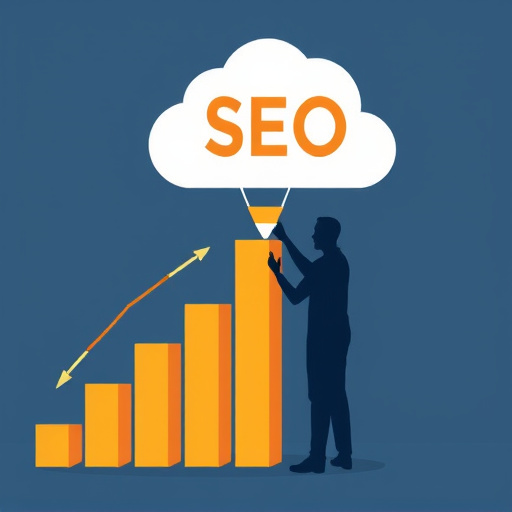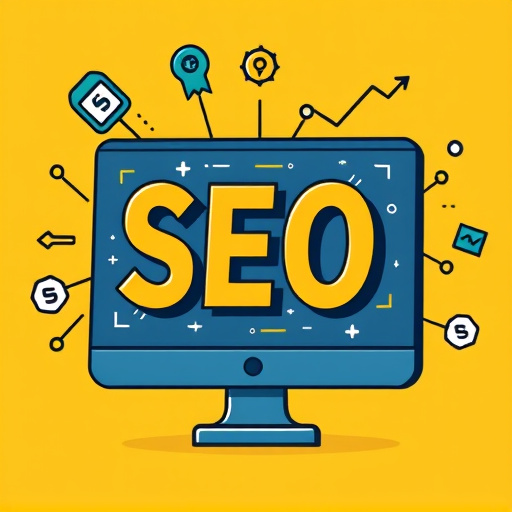Segmenting email lists based on demographics, psychographics, and user behavior is vital for improving ROI in B2B lead generation. By categorizing contacts into distinct groups, businesses can tailor messaging and content distribution, including social media engagement strategies. Leveraging SEO strategies and A/B testing ensures communications remain relevant, boosting open rates, click-throughs, and conversion rates. This personalized approach, combined with data analysis, optimizes lead capture and strengthens client relationships through industry-specific solutions.
Email segmentation is a powerful SEO strategy for B2B lead generation, enhancing ROI by tailoring content to specific audience segments. To maximize effectiveness, businesses should first understand their diverse customer groups and their behaviors. Segmenting based on engagement patterns and leveraging demographic insights allows for precise targeting. Crafting personalized content that resonates with each segment boosts open rates and conversions. Continuous measurement and optimization of these strategies ensure ever-improving results, making email marketing a dynamic tool in the B2B lead generation arsenal.
- Understanding Your Audience Segments
- Segmenting Based on Behavior and Engagement
- Utilizing Demographic Data Effectively
- Creating Relevant Content for Each Group
- Measuring and Optimizing Segmentation Strategies
Understanding Your Audience Segments

Segmenting your email list effectively is key to unlocking higher ROI in B2B lead generation, leveraging SEO strategies that attract and convert targeted prospects. Understanding your audience segments means delving into their unique needs, behaviors, and preferences. This involves segmenting not only based on demographics but also psychographics, purchase history, interactions with your brand, and even referral program participation (like B2B referral program strategies).
By categorizing your contacts into distinct groups, you can tailor your messaging and content distribution channels (including social media engagement) to resonate specifically with each segment. For instance, a B2B social media engagement strategy might look very different for decision-makers compared to end-users within the same industry. Visit us at A/B testing for B2B marketing anytime to refine these strategies further, ensuring that your communications are relevant and impactful, ultimately driving better results in your B2B lead generation efforts.
Segmenting Based on Behavior and Engagement

Segmenting your email list based on user behavior and engagement levels is a powerful strategy to enhance the effectiveness of your B2B marketing campaigns, especially when coupled with robust SEO strategies for B2B lead generation. By understanding how different segments interact with your content and offers, you can personalize communication, ensuring that each recipient receives information relevant to their interests and stage in the buyer’s journey. This approach significantly improves open rates, click-throughs, and conversion rates.
For instance, creating segments for new subscribers versus returning customers allows you to tailor welcome series or loyalty programs accordingly. Moreover, tracking engagement with B2B lead capture landing pages can help identify high-performing content that converts well, enabling you to refine and replicate successful strategies. To further optimize these segmentations, A/B testing is a valuable tool; it lets you experiment with different messaging, offers, and call-to-actions for specific segments, thereby improving B2B lead quality and ultimately driving higher ROI. Visit us at overcoming B2B sales objections anytime to learn more about leveraging data for informed decision-making in your marketing strategy.
Utilizing Demographic Data Effectively

In today’s digital era, leveraging demographic data is a powerful SEO strategy for B2B lead generation. By segmenting email lists based on age, gender, location, and occupation, businesses can tailor their content distribution channels (such as industry-specific blogs or webinars) to attract and convert potential clients more effectively. This precise targeting ensures that marketing efforts are not only effective but also cost-efficient, maximizing ROI in the process. For instance, a tech company could segment its list to send product updates tailored to software developers, enhancing engagement through relevant content.
Moreover, understanding customer behavior and preferences is paramount for successful B2B lead generation. Utilizing lead nurturing techniques, companies can guide prospects through the buyer’s journey with personalized communications. This involves creating targeted email campaigns that address specific pain points or offer solutions based on each demographic segment’s needs. For example, a marketing agency might use this approach to demonstrate case studies relevant to a company’s industry, ultimately generating B2B leads from existing customers by showcasing expertise and fostering trust. When comparing B2B lead generation channels, businesses should find us at the intersection of data-driven decisions and compelling content delivery.
Creating Relevant Content for Each Group

Creating relevant content is key to segmenting your email lists effectively for higher ROI. When implementing SEO strategies for B2B lead generation, tailor your messaging and offers to each specific group within your audience. For instance, a marketing team might be more interested in case studies and industry insights, while sales professionals could benefit from exclusive deals or product demos. By segmenting your list based on job roles, interests, or even previous interactions with your brand, you can generate B2B leads online more effectively. Building trust with B2B buyers is also enhanced when content resonates with their unique needs and challenges.
Using targeted content, you can create engaging B2B lead capture landing pages that convert visitors into prospects. Ensure these pages align with the interests of the segment they target to improve conversion rates. For example, a page focused on thought leadership articles might appeal to decision-makers, while a product showcase would better serve those in purchasing positions. Visit us at comparing B2B lead generation channels anytime to explore more effective strategies for building trust and generating leads online.
Measuring and Optimizing Segmentation Strategies

Measuring and optimizing segmentation strategies are key to unlocking higher ROI in B2B lead generation, as they allow businesses to tailor their messaging for maximum impact. By analyzing open rates, click-throughs, and conversion metrics for each segment, marketers can gain valuable insights into what resonates with different audiences. This data-driven approach enables the refinement of SEO strategies for B2B lead capture, ensuring that content and campaigns are aligned with the unique needs and preferences of target customers.
Overcoming B2B sales objections is another area where segmentation shines. Through case studies, businesses can uncover common pain points and tailor their messaging to address these objections directly. For instance, a B2B SEO for lead generation focused on specific industry challenges could significantly improve conversion rates by providing solutions that resonate with potential clients. For example, find us at B2B customer success stories often highlight how personalized approaches have transformed relationships and increased business value, demonstrating the power of effective segmentation in driving sustainable growth.
To maximize your ROI through email marketing, adopting strategic segmentation practices is key. By understanding your audience segments, you can tailor content that resonates with each group, enhancing engagement and conversions. Leverage behavior and demographic data to create targeted campaigns, ensuring your messages land with impact. Continuously measure and optimize your strategies, allowing for continuous improvement in your B2B lead generation efforts via SEO-friendly email tactics.
